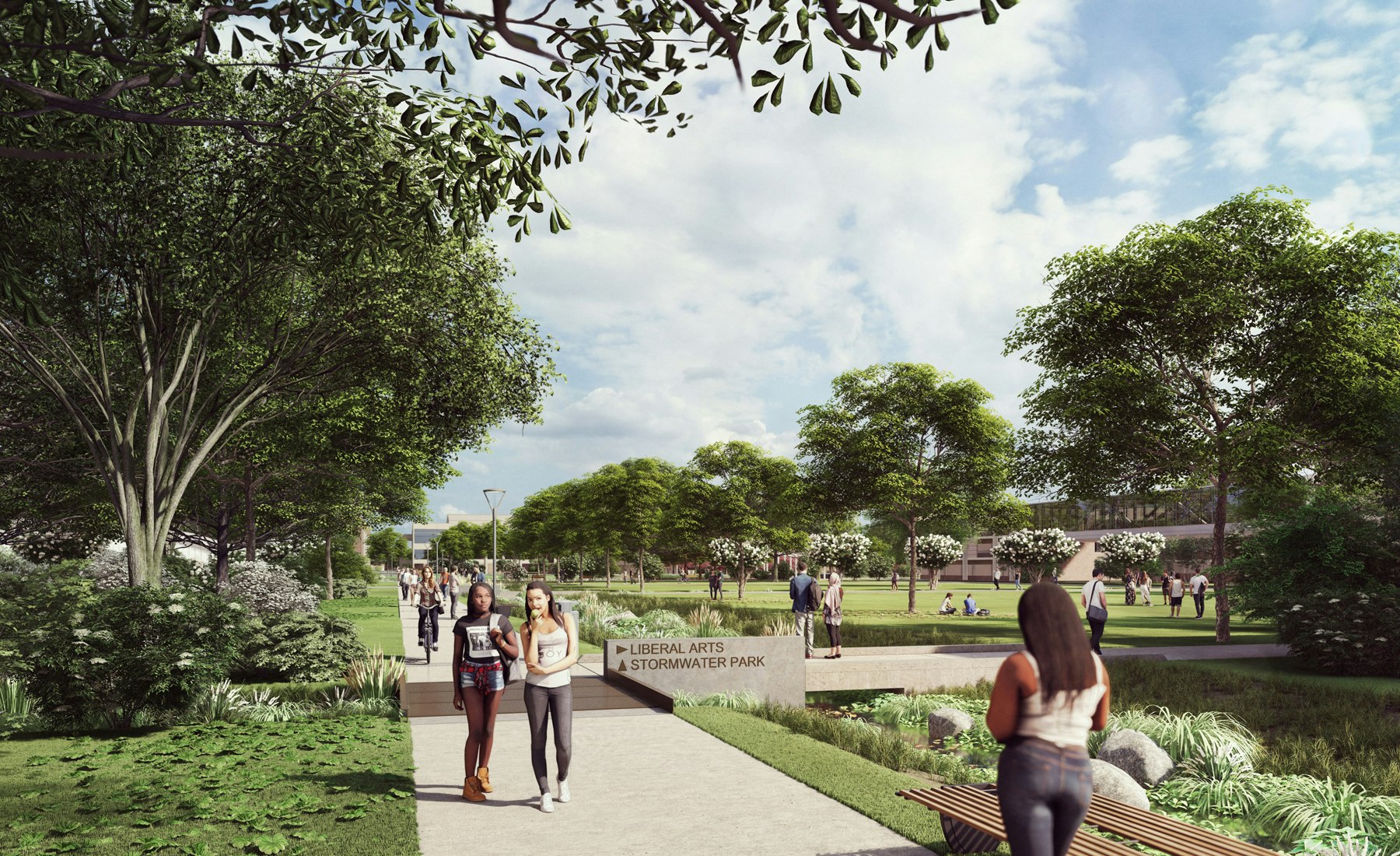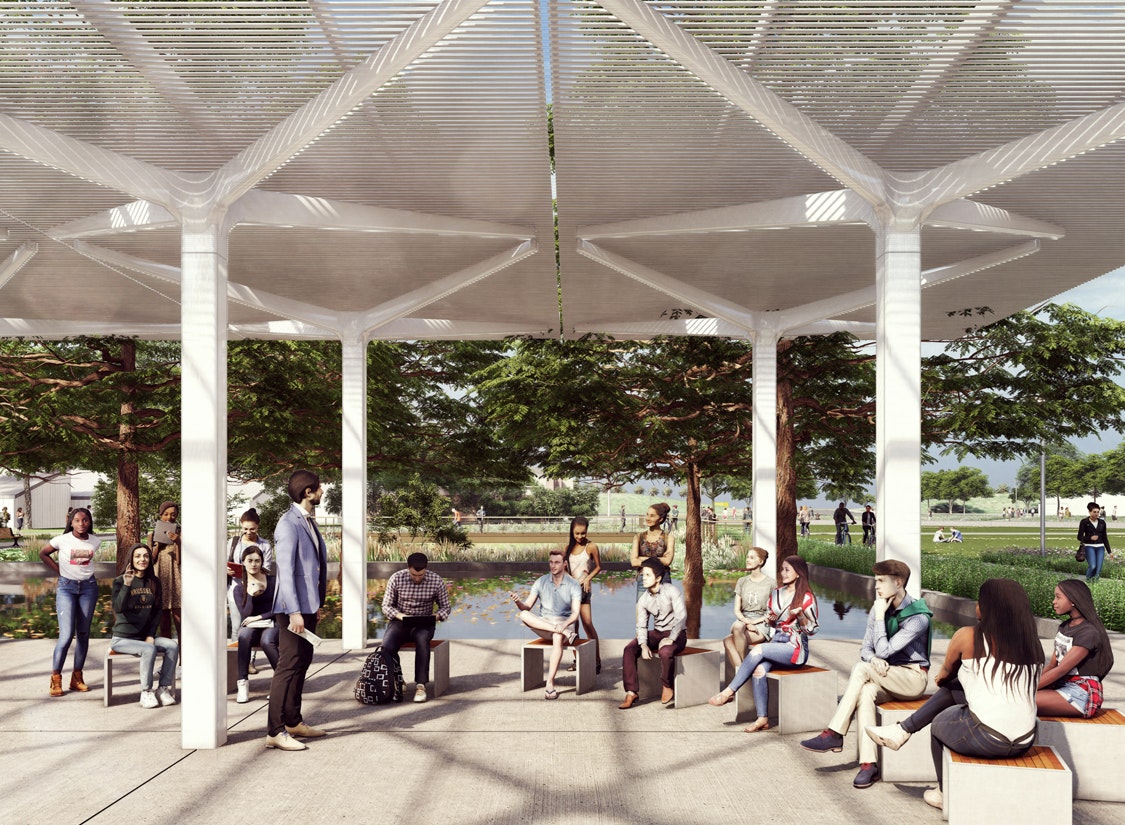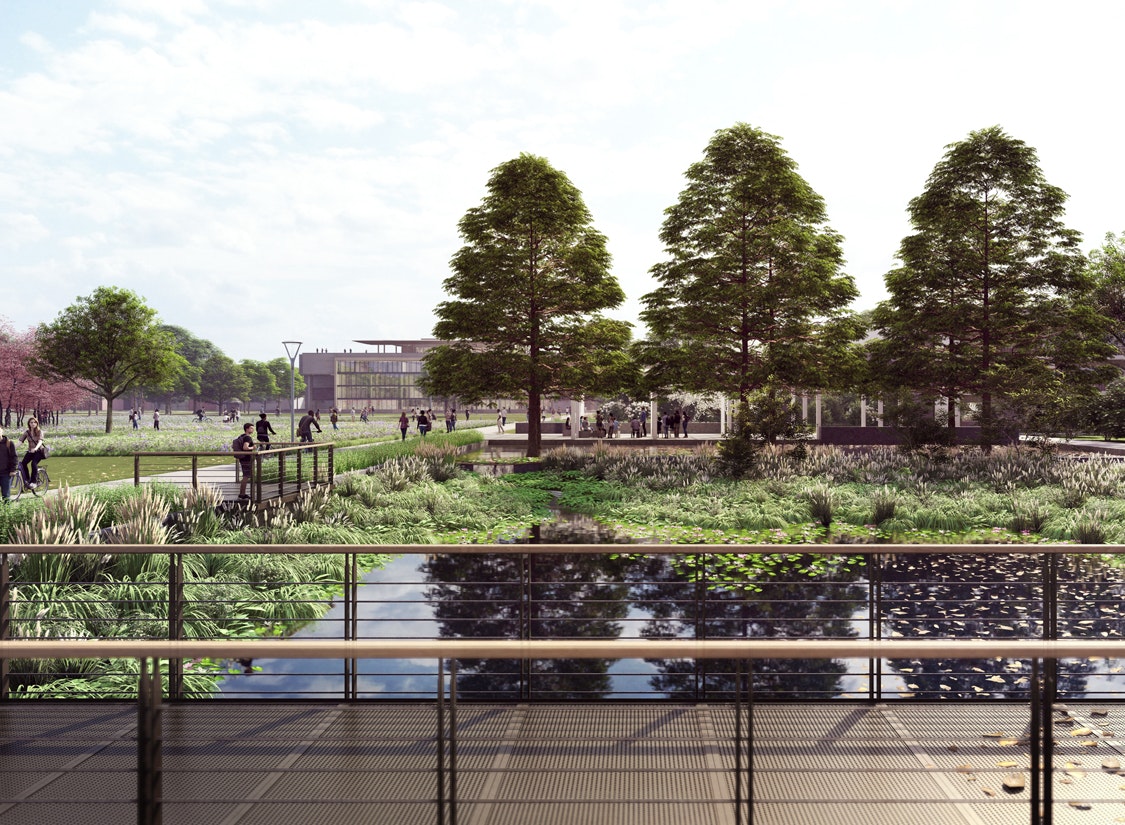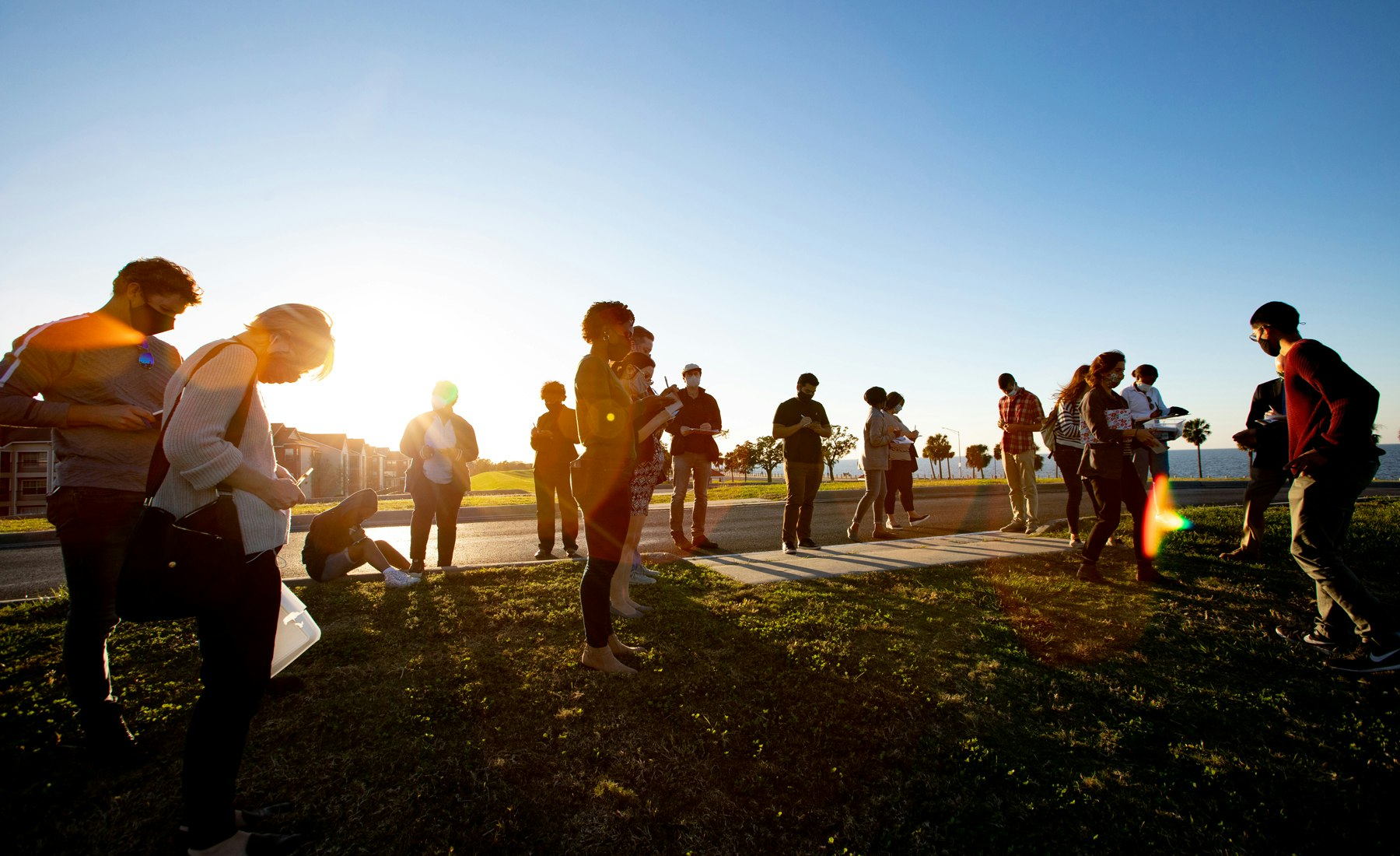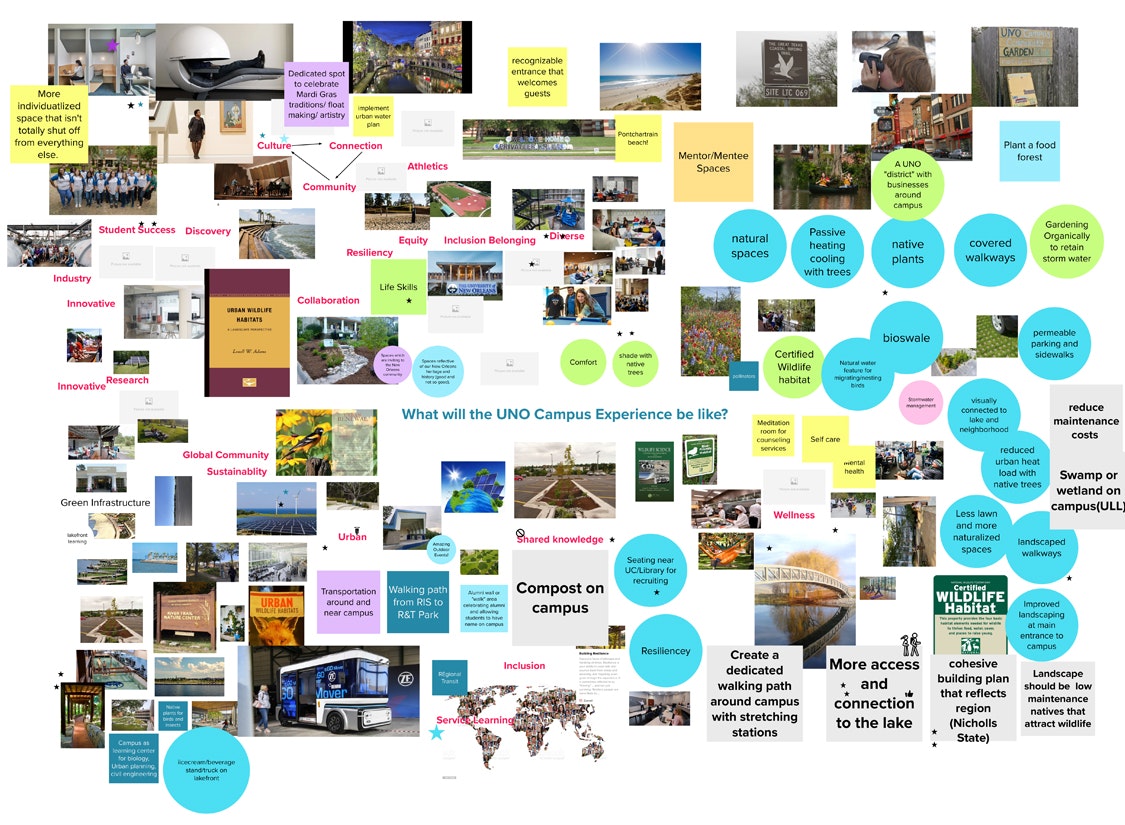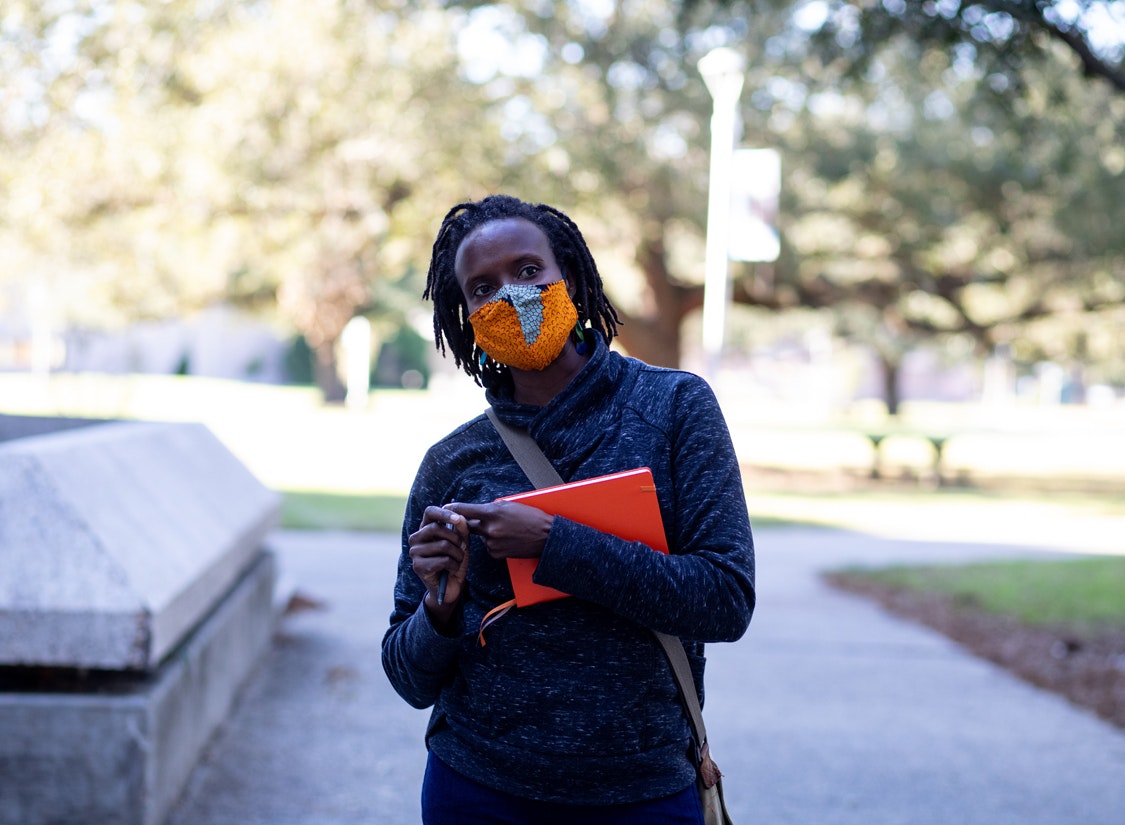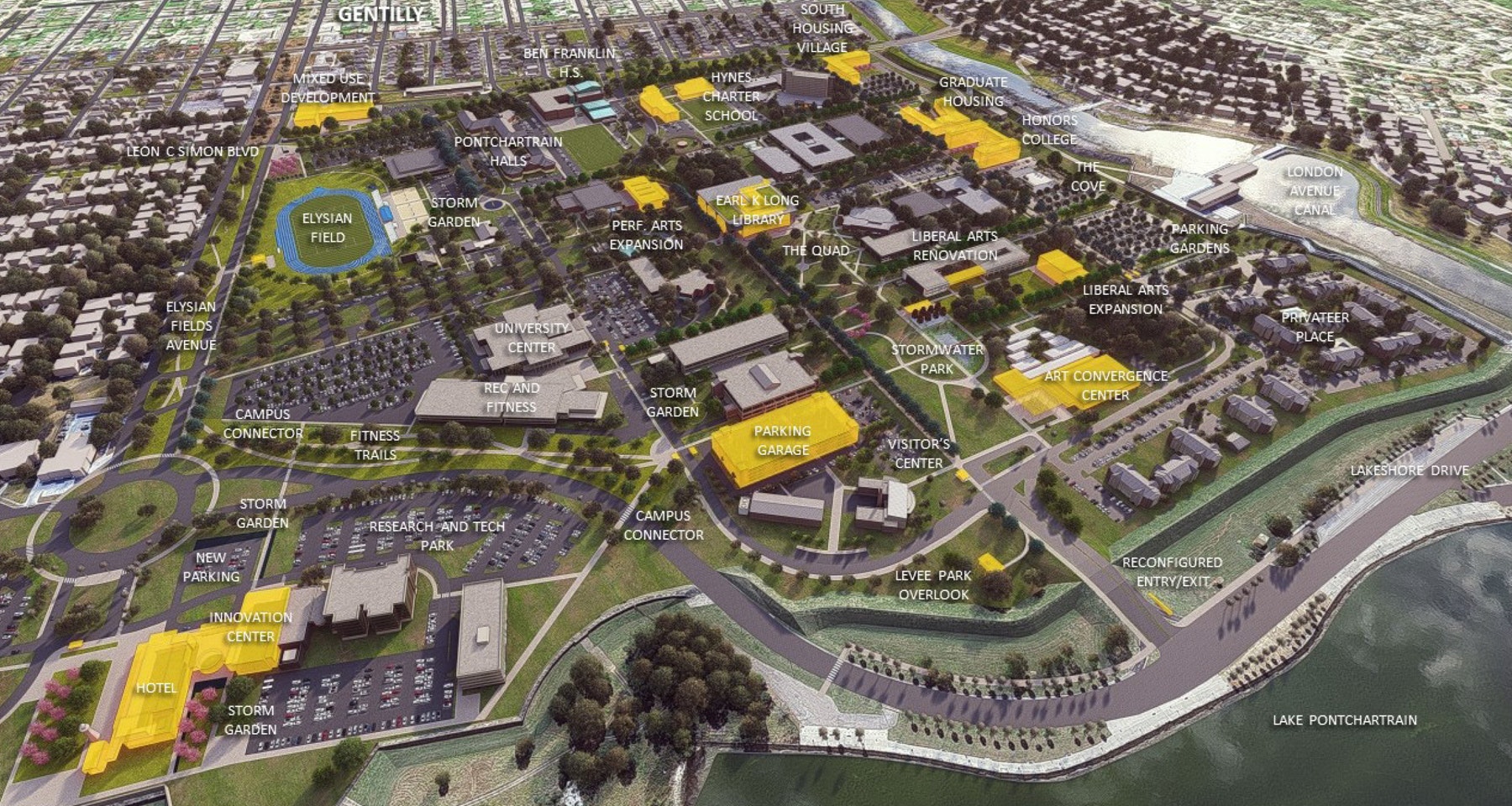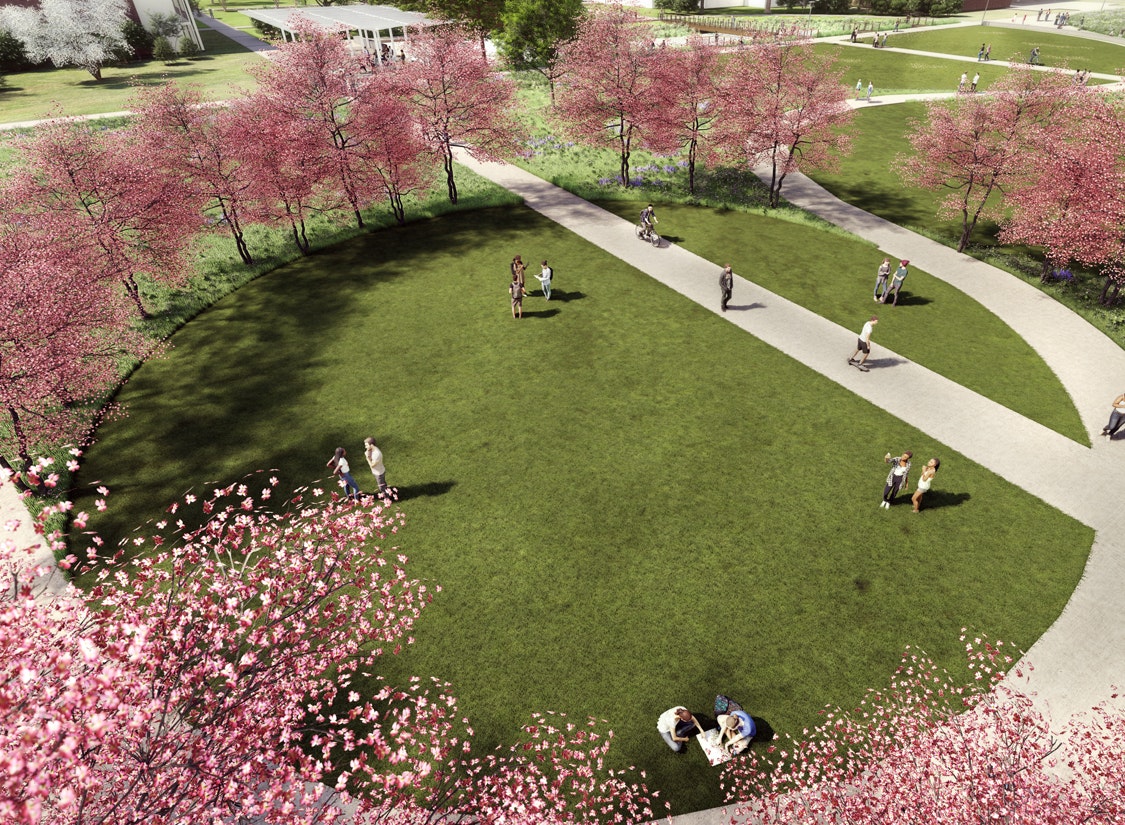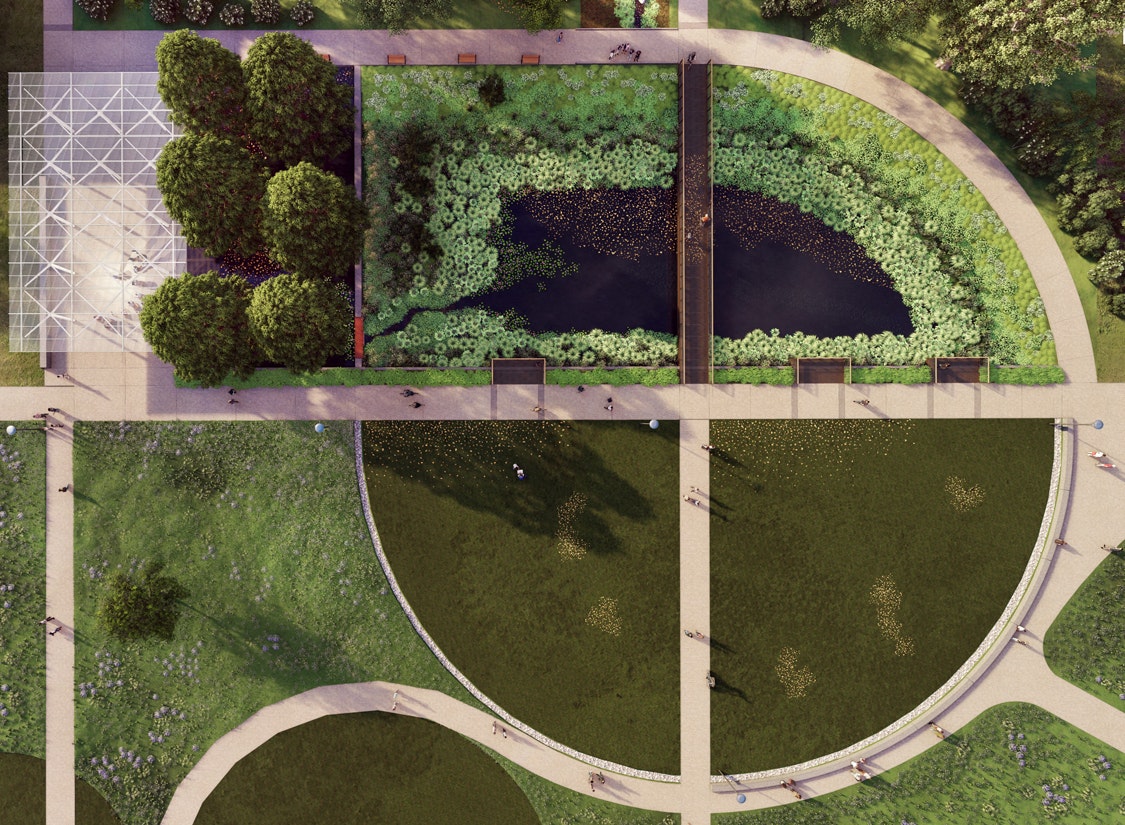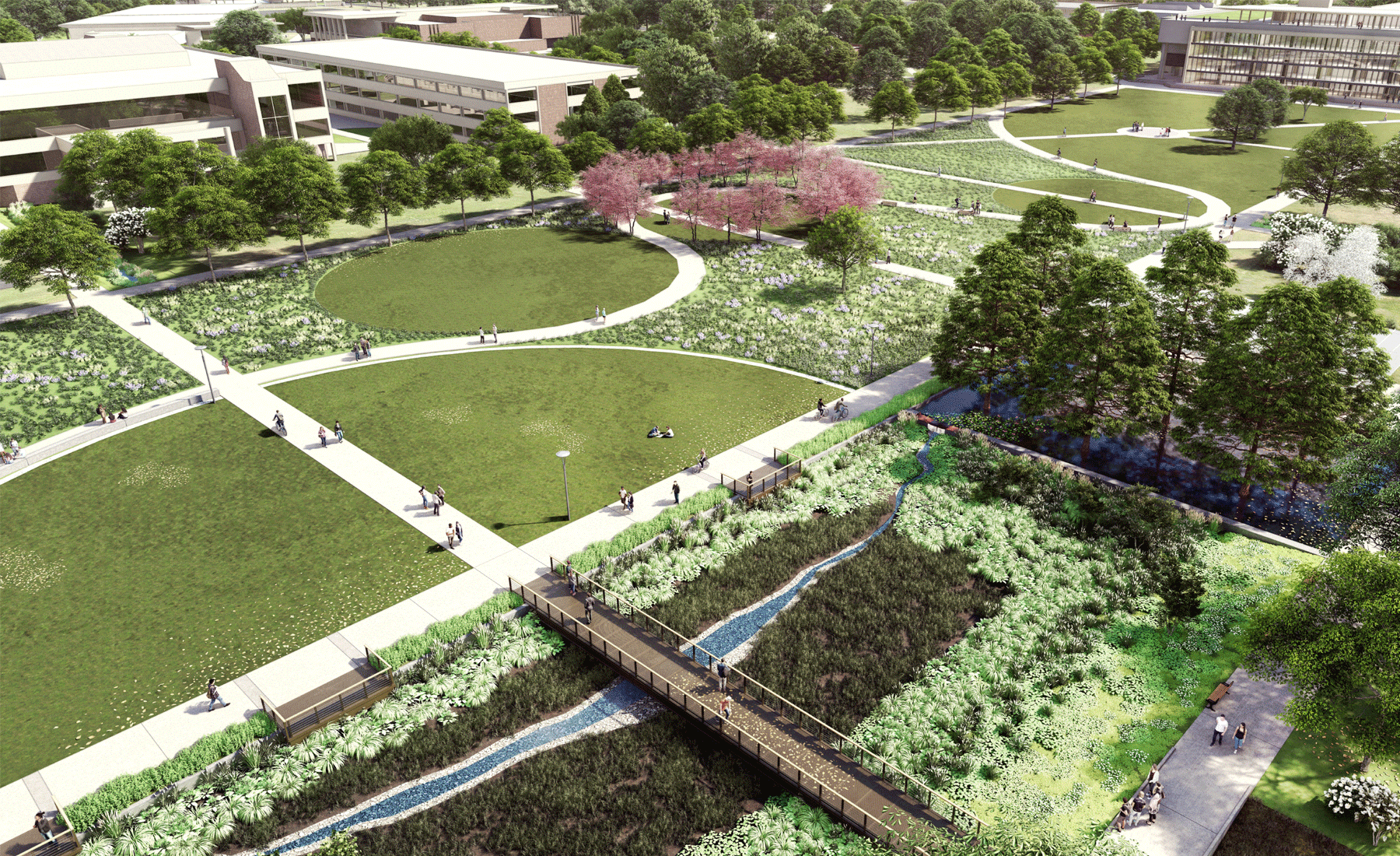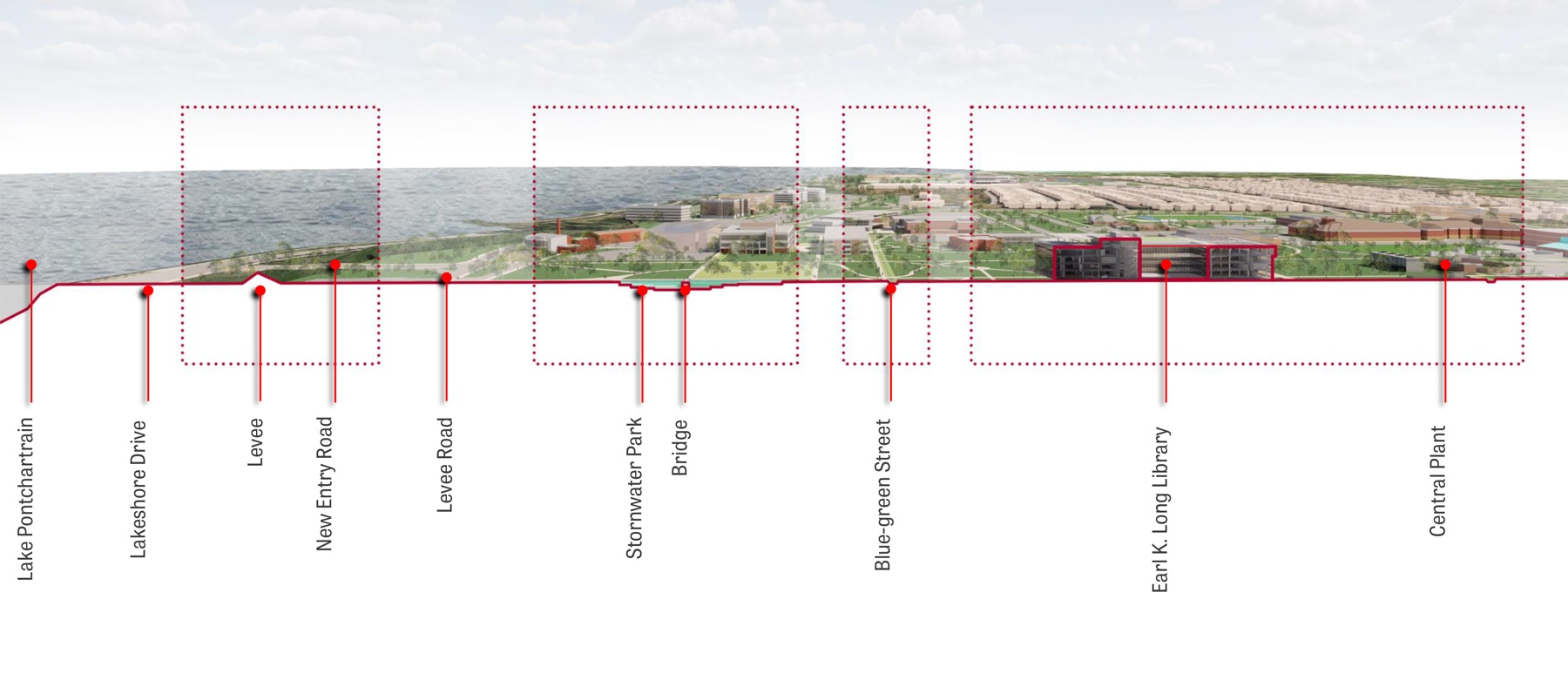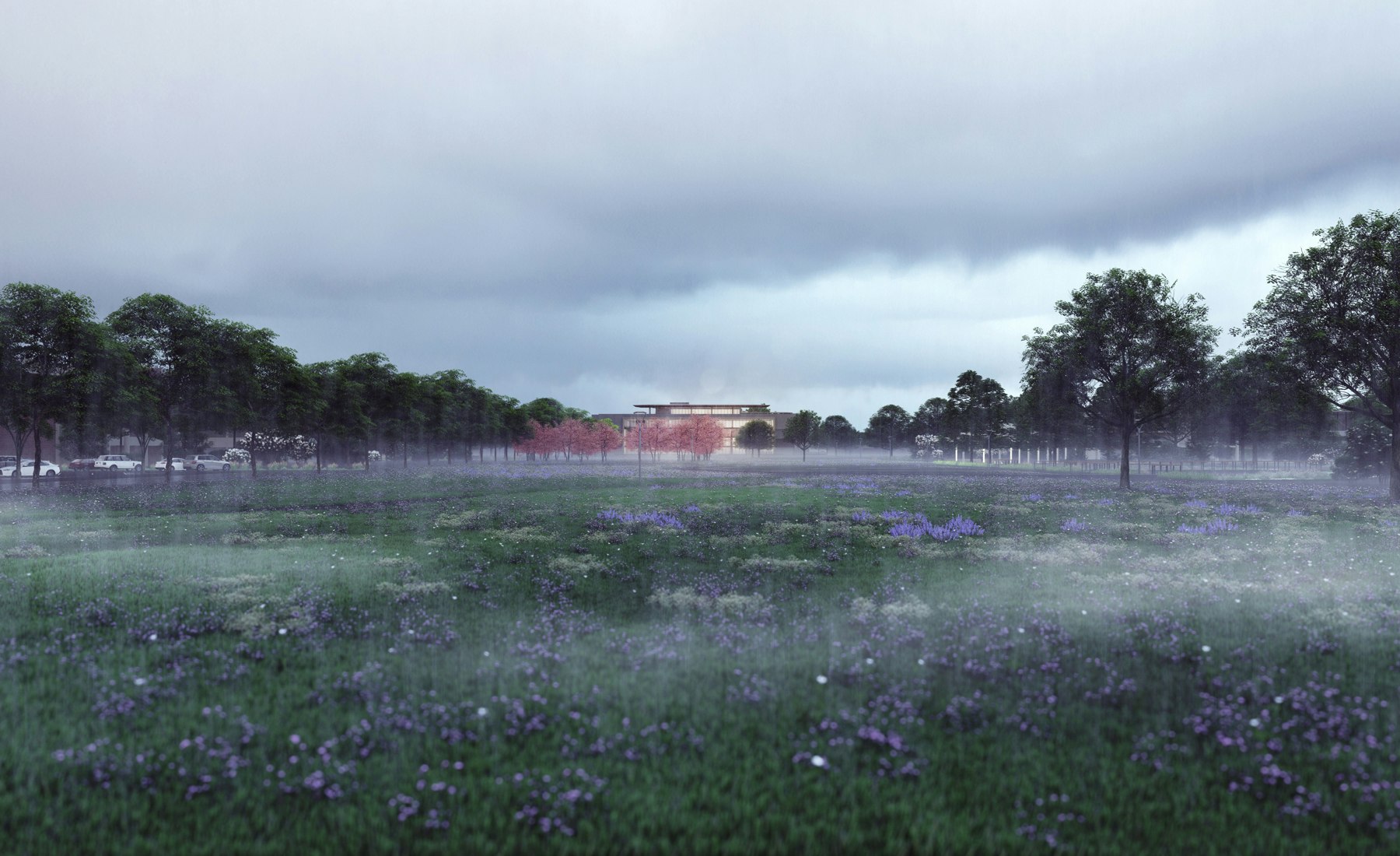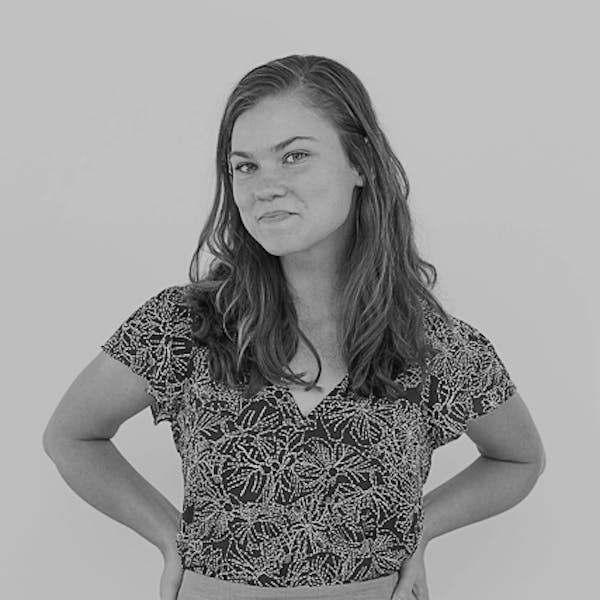The University of New Orleans Master Plan was commissioned to address both near-term planning and construction needs while also embracing longer-term interests in better understanding how the 200 acre campus should evolve to address changing trends in higher education, the shifting demographics of the student body, and the changing urban fabric of the City of New Orleans. As such, the master plan scope was simultaneously focused on discreet interventions to aid in establishing a prioritized list of proposed investments to be made today while also casting a far-broader view that sets an aspirational tone for the University’s expansion over the next 20+ years.
The message of the master plan is simple: the intention is to create, “One U.N.O,” in reference to a single, unified campus community comprised of an incredibly diverse set of students and their individual needs and desires. It also reinforces the imperative that in order to excel, all parts of the community must be in dialogue and working towards common, shared goals. Students, faculty, staff, and administrators engaged in conversations with residents of the city, alumni of the school, business owners, researchers, and design consultants to create a transparent, collaborative and equitable master plan design process that sought what is best for all parties – not just for the University.
VMDO created a design process that front-loaded the planning effort with a thorough investigation of the existing conditions on campus. Once the design team had a confident understanding of these conditions, they launched an intensive series of engagement workshops, casting a broad net in hopes of soliciting as much input as possible from the school and its surrounding neighbors. The challenges of Covid-19 presented themselves immediately, requiring the majority of the interactions to be done remotely. However, what was first perceived as a limitation of the process became a strength: remote workshops expanded the options for engagement, dialogue, and collaboration.
Local partners and national thought leaders worked iteratively to develop a range of partial solutions to the challenges that surfaced from the engagement process. Four areas of focus helped channel the team’s inquiries:
Water and environment. How will U.N.O. shepherd the natural resources of the site, and how will it help lead the conversation about resilience and sustainability – both in New Orleans and across the globe?
Connections. How will the University improve the way it connects people? How does the physical environment facilitate stronger links between students and faculty, between the University and the community? Between the City and the Lake?
Community. How and where do people come together? What does community mean in the digital age? How can campus encourage communal gatherings?
Education. What are U.N.O.’s strengths and how can the plan continue to improve them? Where are academic weaknesses and how can the plan bolster them?
With the idea of “One U.N.O.” in mind, the resulting Master Plan is built upon the principle of connections, both newly proposed and enhancing existing instances:
Connecting precincts. Propose a major urban intervention to better connect the core campus to U.N.O.’s east campus, in addition to a number of new pedestrian connections between the core campus and adjacent park.
Connecting to the neighborhood. Make the edges of campus better defined and more porous. The boundaries between campus and neighborhood are articulated with welcoming public pathways and places to sit and linger. A proposed mixed-use building at a vital urban intersection would serve both students and community members.
Connecting to the site and nature. At the heart of the master plan is the idea that one of the University’s greatest strengths is its geographic location and its relationship to a unique coastal / riparian ecosystem. The framework of landscapes and infrastructure that undergird the plan reinforce the pivotal relationship U.N.O. has with water and the other natural resources on campus.
Connecting people and programs. Without the students, there would be no need for a campus. Their success, and the opportunities the University provides for their growth and maturity are the most important facet of master plan. The design of the plan strives to make learning opportunities more visible and more accessible for the entire community of learners.
Few universities can boast of a waterfront location, and fewer still can claim to be situated in a more dynamic ecological setting than U.N.O. The university finds itself at the leading edge of discussions about what it means to be resilient and what needs to be done to occupy its Louisiana location in a sustainable way. Coastal resilience, and actively building landscapes and facilities that are hardened against sea level rise and the impacts of storm surges were carefully considered. Less visible, yet equally important, measures were suggested to secure a balanced relationship with the planet and establish a healthy, symbiotic relationship between campus development and the natural world. Ultimately, the plan provides a researched vision of what the campus could feel like in the coming years in service to its larger goals and reinforcing its longevity.
Client: University of New Orleans
Location: New Orleans, Louisiana
Discipline: Campus Master Plan
